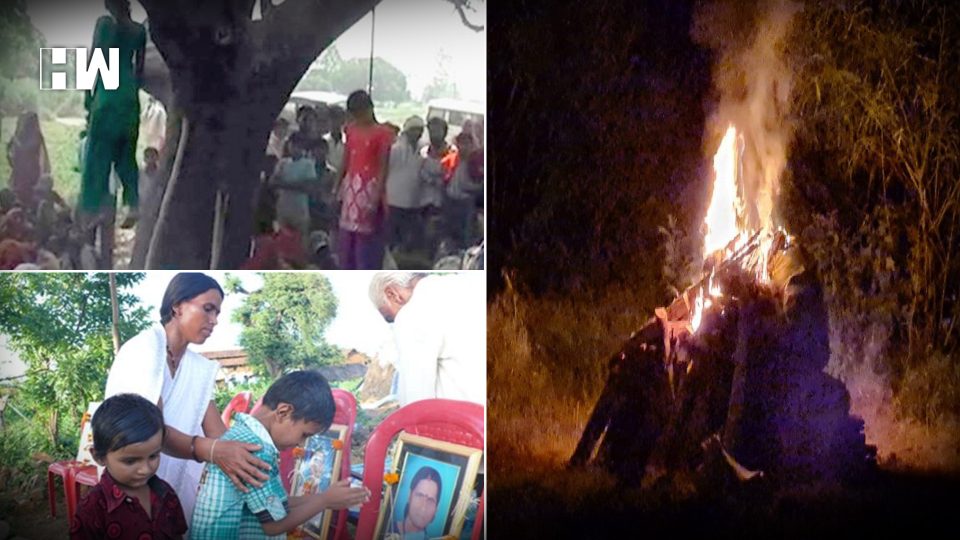Many were opposing the caste angle in the Hathras story initially, only until the Upper caste community from the village held gatherings in support of the accused.
The unfortunate incident of the alleged rape and murder of 20 years old Dalit girl in Uttar Pradesh’s Hathras village has created a lot of stir. The delay in registering FIR and negligence over sending the victim to Delhi for proper treatment has raised several questions over the attitude of local police and administration in the initial phase. But the cremation of the victim’s body in the dead of night has only made the matter worse for the UP police. Would the police have shown such negligence, had the victim belonged to the community which dominates the village? Would the district magistrate had threatened the victim’s family as alleged by the opposition, had the family belonged to the upper caste?
Caste Prevails
The good old realization of how caste equations still prevail in Indian society has come back. However, many were opposing the caste angle in the Hathras story initially, only until the Upper caste community from the village held gatherings in support of the accused. Though the case has been recommended to the CBI, the Dalit family of the victim still lives in the village dominated by caste Thakurs. The family has been incessant in addressing the threats they would face once the story stops getting attention in the daily news. However, to understand how caste plays its role in such cases, we’d have to look back at two similar incidences in past.
The Blot Of Khairlanji
In a small village called Khairlanji in the Bhandara district of Maharashtra, four members of the Bhotmange family belonging to a Scheduled caste were murdered. Infamously known as Khairlanji Hatyakand (massacre), the extent of violence in this case shook everyone across the country.
According to reports, Surekha Bhaiyyalal Bhotmange had earlier lodged a police complaint against the members of the politically dominant Kunbi caste over a land dispute. Enraged by the complaint, the accused dragged out Surekha Bhaiyyalal Bhotmange and two of her sons and daughter, paraded naked in the village, sexually abused them, and then hacked them to death.
Reportedly, the criminal act was in fact carried out by assailants from the politically powerful Kunbi caste people because the Bhotmange family opposed the requisition of their field to have a road built over it.
Indian media did not cover this incident until the Nagpur riots by the Scheduled Caste citizens. Initial reports suggested that the women were gang-raped before being murdered. Though CBI investigations concluded that the women were not raped, there were allegations of bribery of doctors who performed the post-mortem, and of corruption.
There were also allegations of local police shielding the perpetrators. In fact, a government report on the killings, prepared by the social justice department and YASHADA—the state academy of developmental administration, has implicated top police officers, doctors and even a BJP member of the Legislative Assembly, Madhukar Kukade in an alleged coverup and hindering the investigations.
The then Home Minister of Maharashtra R.R. Patil accepted that there were lapses in the police investigation and said that five policemen suspended in the investigation of the killings have been dismissed.
In September 2008, six people were given the death sentence for the crime. However, on 14 July 2010, the Nagpur bench of the High Court commuted the death penalty awarded to the six convicted to a 25-year rigorous imprisonment jail sentence.
The Badaun Horror
In another case, gang rape and murder of two teenage girls were reported in the Katra village of Badaun district of Uttar Pradesh on 27 May 2014.
In the evening the girls had gone out into a field that was used for open defecation and did not return. The police were notified but initially took no action. Villagers searched for the girls throughout the night and they were found the following morning hanging from a tree. The pictures of two girls hanging from the tree spread like wildfire. The visual portrayal of this incident is seen in Anubhav Sinha’s film Article 15, which is loosely based on this incident.
According to the post-mortem done earlier, it was reported that the girls had been raped and died from strangulation due to being hanged while still alive. The CBI investigation, however, ruled out rape citing “no evidence” and said the initial examination conducted by a physician who had never conducted rape investigations before, was flawed. The victim’s family and many activists rejected the CBI report as a cover-up “to avoid international shame and acceptance of the dismal law and order situation”.
The family accused the local police of cover-up because they belonged to the lower caste in the caste hierarchy.
The CBI announced on 27 November 2014 that they have concluded the two cousins were not sexually assaulted and murdered as police initially said, but took their own lives.
What Have We Learnt?
Patriarchy remains a major reason for violence against women. When the patriarchy is born out of caste ideals, the magnitude of the violence is often alarming. The Khairlanji massacre or the Badaun incident are not isolated incidents. There may not be the violence of this scale in every reported incident, but to nullify the caste angle in these cases is criminal. Caste-based discrimination is still prevailing in the society, and when the victim is subjected to the violence because of his/her caste, Caste Matters!
As an independent media platform, we do not take advertisements from governments and corporate houses. It is you, our readers, who have supported us on our journey to do honest and unbiased journalism. Please contribute, so that we can continue to do the same in future.

